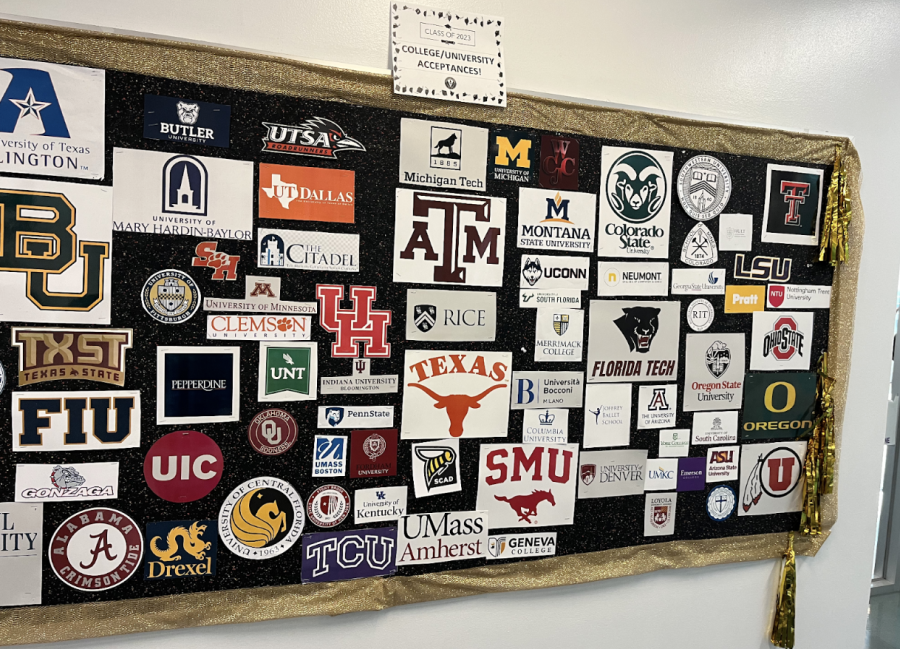College Acceptances: the Good, the Bad, and the Dirty
Your heart is racing. It’s the moment of truth. Where will you spend the next four years of your life? You nervously open the student portal of your dream university, hands trembling. You’ve worked for what feels like your whole life just for this moment. As you open the pdf, the only thing you can hear are the echoes of your own self worth. “Am I good enough?” Then you see the message…
Thank you for your application, unfortunately at this time we cannot offer you a place at ___ University for the class of 2027.
Let’s take a step back. For most of us, especially the high school seniors, this hypothetical situation is nerve racking and scary. We spend the majority of our four high-school years perfecting our extracurriculars and working hard to get good grades so that we can stand a fighting chance in the admissions process for the first- and second-tier universities of the world.
Oftentimes, especially after rejections, we are left to feel that we just spent our valuable teenage years in an uphill battle, like Sysyphus punished for eternity and forced to push a boulder up a hill only for it to fall when he neared the top. However, is that the case? Let’s take a look at the statistics. “Between 2009 and 2020, total undergraduate enrollment decreased by 9 percent (from 17.5 million to 15.9 million students). In contrast, total undergraduate enrollment is projected to increase by 8 percent (from 15.9 million to 17.1 million students) between 2020 and 2030.” (NCES) It’s not only enrollment that is spiking, though. The number of applications higher level academic institutions are receiving is through the roof. “The Common App says college applications are up for fall, 2023. Way up. According to their January 2023 update, ‘distinct first-year applicants’ are up 20% for 2023.” (Forbes)
How about the change in the number of academic institutions? How does that number influence admissions and enrollment statistics? The truth is it’s hard to say. The metrics for defining what higher education is is often variable, as there are other factors to consider, such as if two-year trade schools or community colleges should be included in the list, or how satellite campuses are counted. Furthermore, mergers of campuses could see a decrease in the number of institutions, while enrollment would stay the same (USNews). What we know for sure, though, is that the decline in college enrollment, initially brought on by the recession of 2008, and exacerbated by the Coronavirus epidemic brought a sharp decline in the enrollment of four-year students (Vox). As a result, many institutions downsized, increased prices to make up for losses or closed altogether. In fact “The average cost of college tuition & fees at public 4-year institutions has risen 179.2% over the last 20 years for an average annual increase of 9.0%.” (Education Data Initiative). This is indicative of the struggles many universities have faced over the past decade, in attempting to keep students enrolled.
It’s simple to see how this applies to students graduating in 2023. Unfortunately, we may be facing one of the most competitive years for college applications in history. The historic barriers to entry for applications are long gone – websites such as CommonApp, Coalition, or UCAS (for the UK) make it easier than ever to apply to university. Students that may not have previously applied feel much less deterred by the process and apply to more schools, and universities, seeking to boost their reputations and market themselves by showcasing their absurdly low acceptance rates encourage this behavior. How do students respond? Do they apply to more universities to increase their chances of acceptance to one that matches their criteria, each time paying a $75-100 fee? I’m sure you can see the cycle here. There is little data to indicate that these universities have grown in the past year to accommodate all these new applicants, and the truth is many never intended to in the first place.
The purpose of this op-ed is not to criticize the admissions system in America or say that we are pawns in a scheme bigger than ourselves. Rather, it’s to remind us to see the bigger picture. When you do receive that rejection, don’t be too hard on yourself, and more importantly, don’t lose track of the things that matter to you. Continue to do the things that bring you joy in life. Most importantly, don’t quit! Stay competent and strive for excellence in whatever you do. Ultimately, one of these colleges will see you for who you truly are, and in the end, any of the schools is a viable path to a fulfilling career.

Sevastian Oti is an introspective, curious, and spontaneous senior and this is his first year on Viking Media. Outside of school hours, he has an internship...






